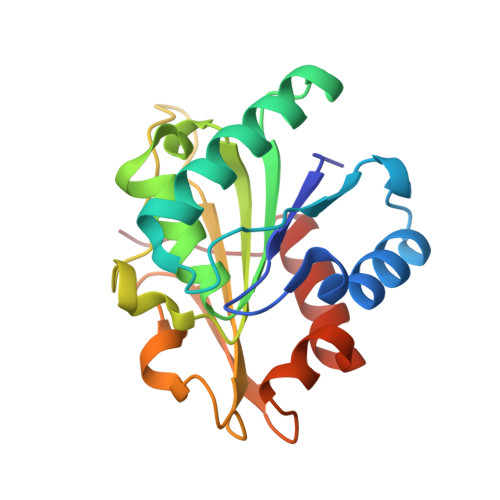Thermostable Bacillus subtilis lipases: in vitro evolution and structural insight
Ahmad, S., Kamal, M.Z., Sankaranarayanan, R., Rao, N.M.(2008) J Mol Biol 381: 324-340
- PubMed: 18599073
- DOI: https://doi.org/10.1016/j.jmb.2008.05.063
- Primary Citation of Related Structures:
3D2A, 3D2B, 3D2C - PubMed Abstract:
In vitro evolution methods are now being routinely used to identify protein variants with novel and enhanced properties that are difficult to achieve using rational design. However, one of the limitations is in screening for beneficial mutants through several generations due to the occurrence of neutral/negative mutations occurring in the background of positive ones. While evolving a lipase in vitro from mesophilic Bacillus subtilis to generate thermostable variants, we have designed protocols that combine stringent three-tier testing, sequencing and stability assessments on the protein at the end of each generation. This strategy resulted in a total of six stabilizing mutations in just two generations with three mutations per generation. Each of the six mutants when evaluated individually contributed additively to thermostability. A combination of all of them resulted in the best variant that shows a remarkable 15 degrees C shift in melting temperature and a millionfold decrease in the thermal inactivation rate with only a marginal increase of 3 kcal mol(-1) in free energy of stabilization. Notably, in addition to the dramatic shift in optimum temperature by 20 degrees C, the activity has increased two- to fivefold in the temperature range 25-65 degrees C. High-resolution crystal structures of three of the mutants, each with 5 degrees increments in melting temperature, reveal the structural basis of these mutations in attaining higher thermostability. The structures highlight the importance of water-mediated ionic networks on the protein surface in imparting thermostability. Saturation mutagenesis at each of the six positions did not result in enhanced thermostability in almost all the cases, confirming the crucial role played by each mutation as revealed through the structural study. Overall, our study presents an efficient strategy that can be employed in directed evolution approaches employed for obtaining improved properties of proteins.
Organizational Affiliation:
Centre for Cellular and Molecular Biology, Council of Scientific and Industrial Research, Uppal Road, Hyderabad-500007, India.














